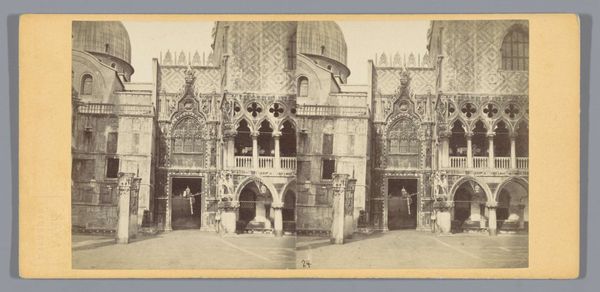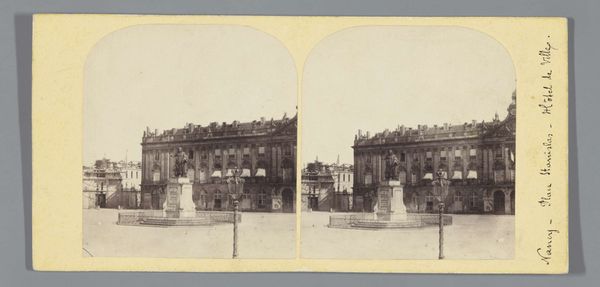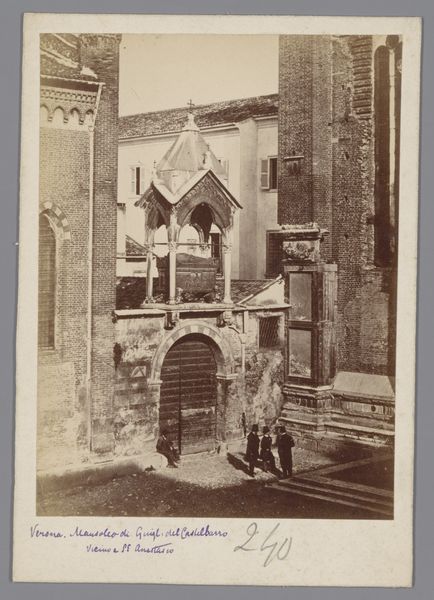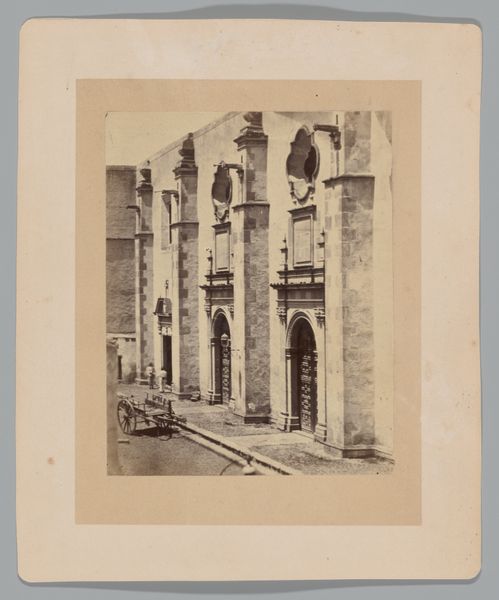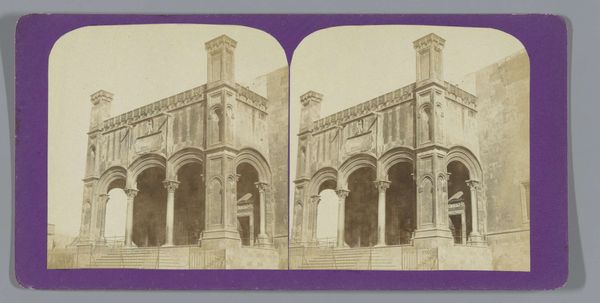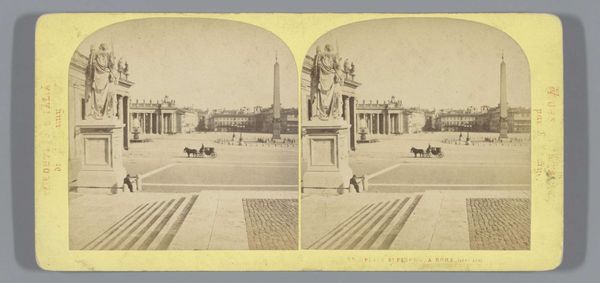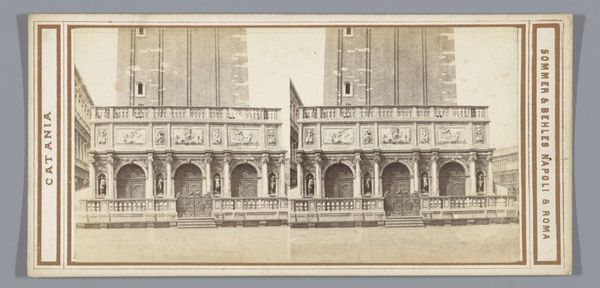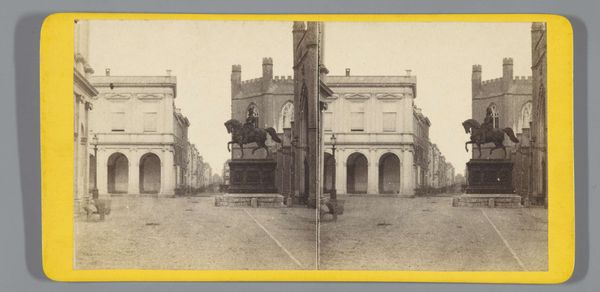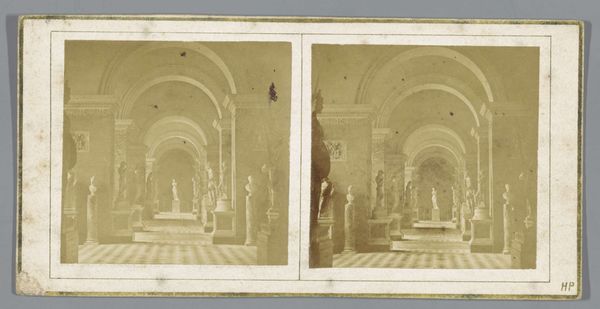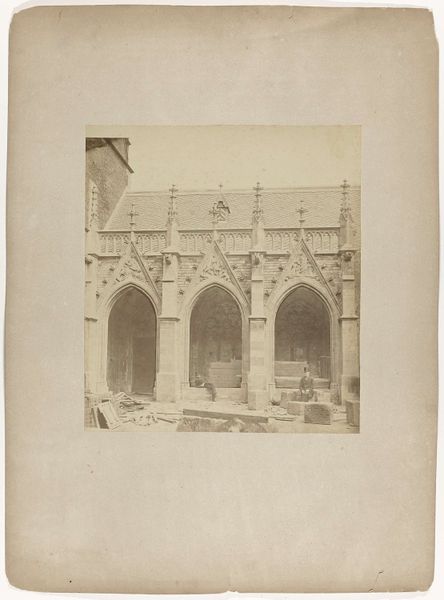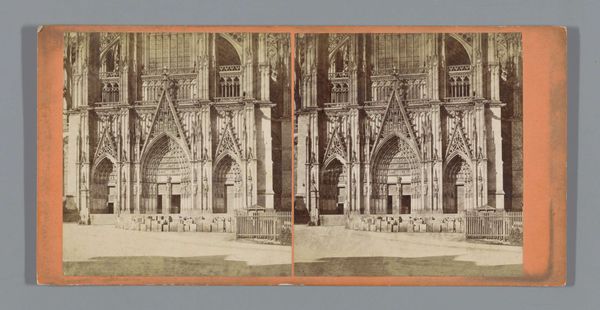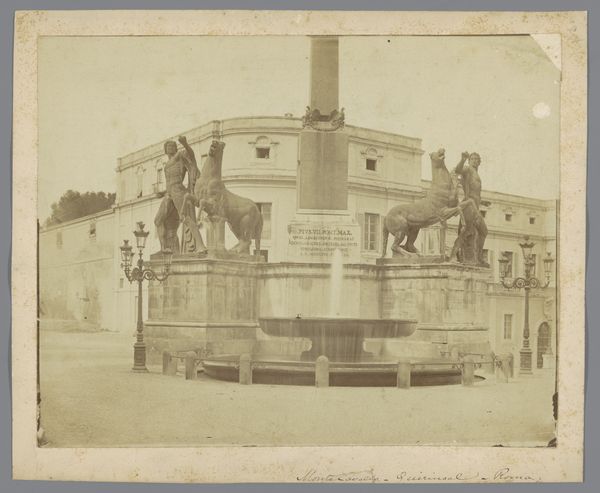
Gezicht op Paleis Noordeinde met het ruiterstandbeeld van Willem van Oranje in Den Haag 1858
0:00
0:00
photography, gelatin-silver-print
#
neoclacissism
#
statue
#
landscape
#
photography
#
gelatin-silver-print
#
19th century
#
cityscape
Dimensions: height 84 mm, width 168 mm
Copyright: Rijks Museum: Open Domain
Charles-Henri Plaut made this stereoscopic photograph of Noordeinde Palace in Den Haag, featuring the statue of William of Orange, sometime between 1819 and 1870. This work encapsulates the 19th-century Dutch reverence for its historical figures and the architectural grandeur that symbolized national pride. At the heart of this composition is the equestrian statue of William of Orange. Often these monuments served as powerful tools for constructing national identity. They reinforced a narrative of heroic leadership and solidified a sense of shared history, even as the realities of Dutch society were far more complex and diverse. Plaut’s choice of the stereoscopic format isn’t accidental; it invites viewers into a deeper, almost tangible connection with the scene. This intimate perspective encourages a personal reflection on the legacy of Dutch identity. While seemingly a straightforward depiction, the photograph subtly underscores the constructed nature of national heroes.
Comments
No comments
Be the first to comment and join the conversation on the ultimate creative platform.
